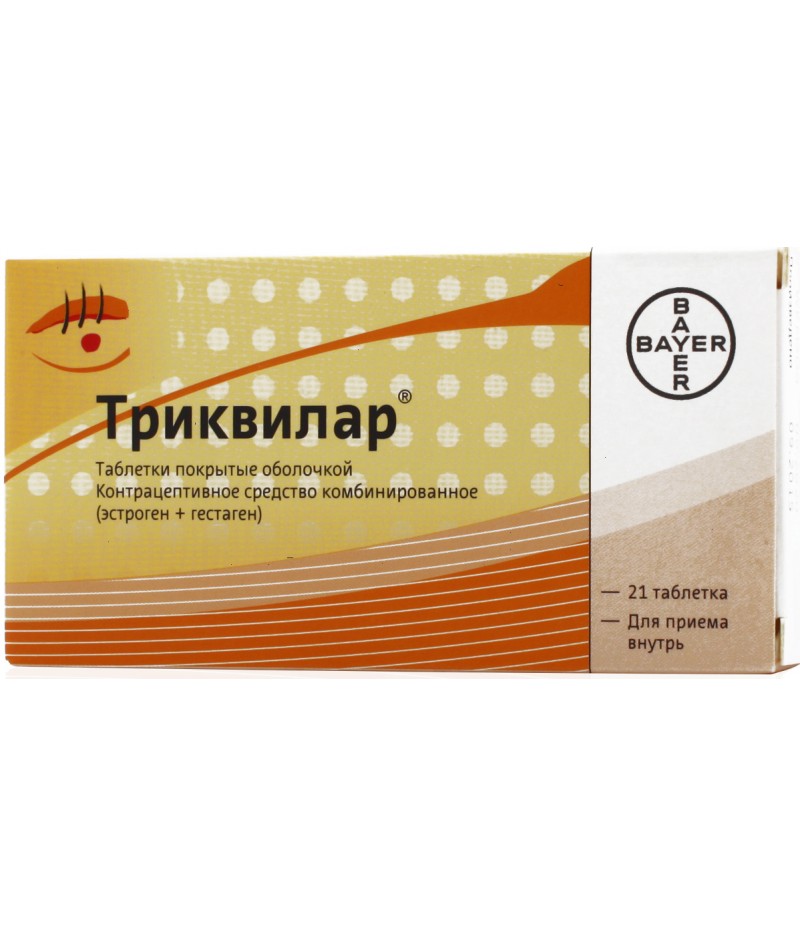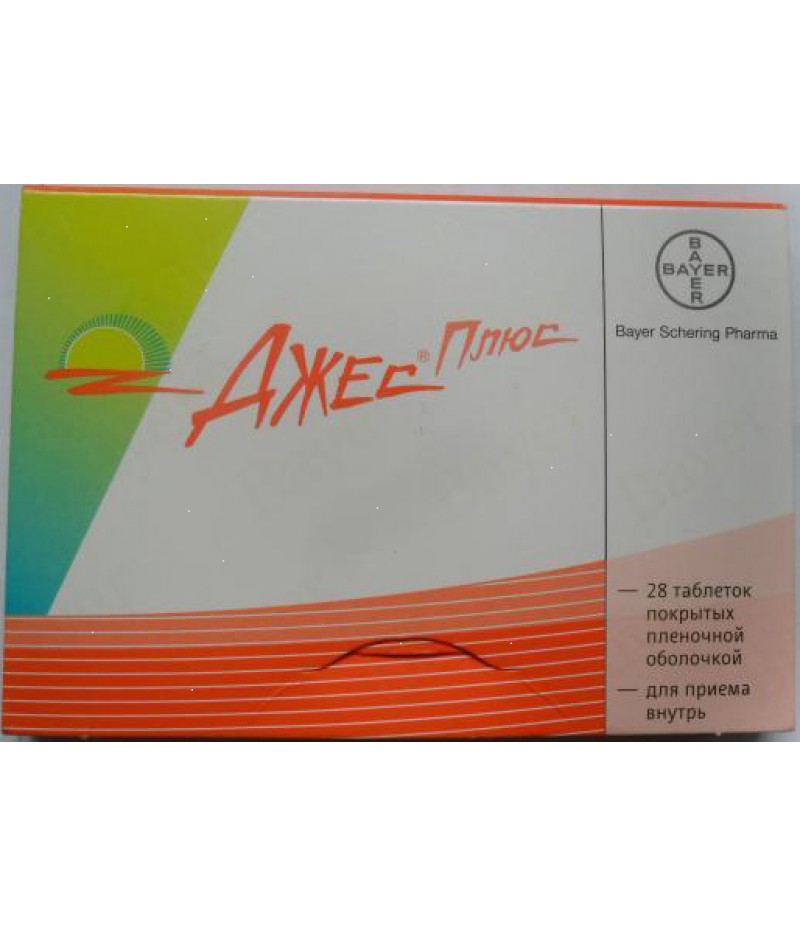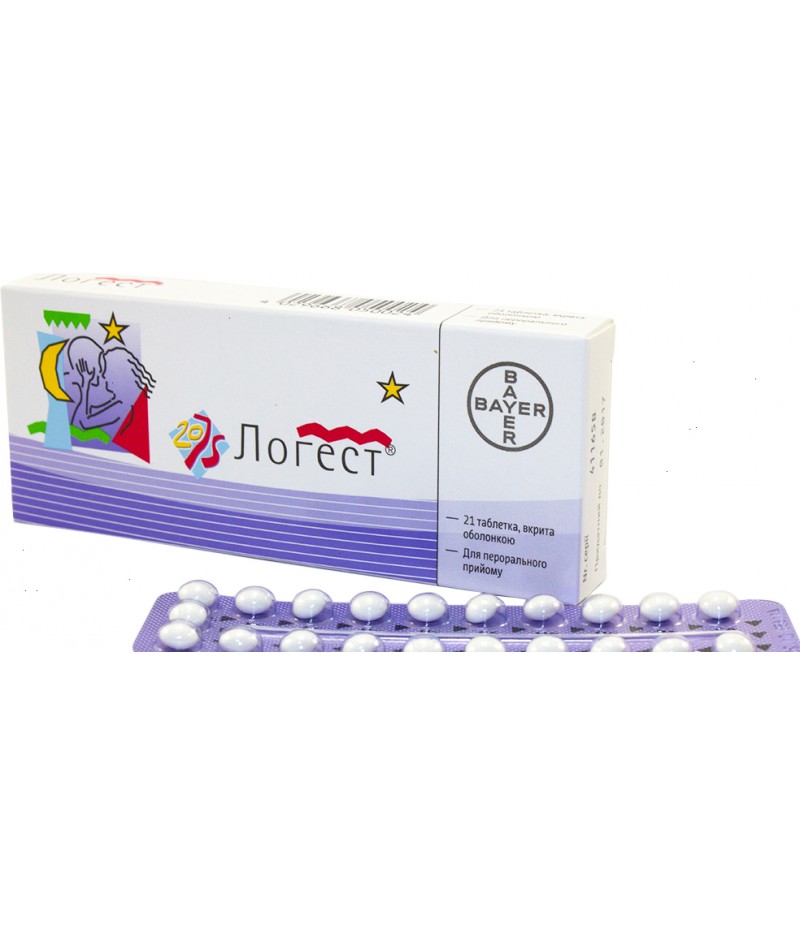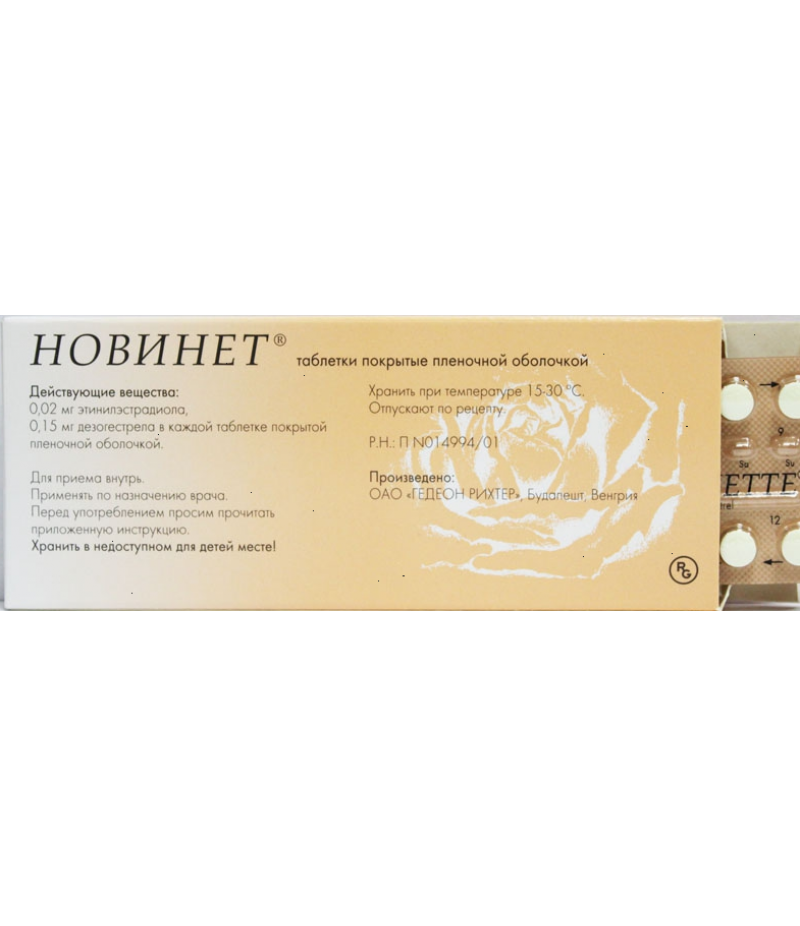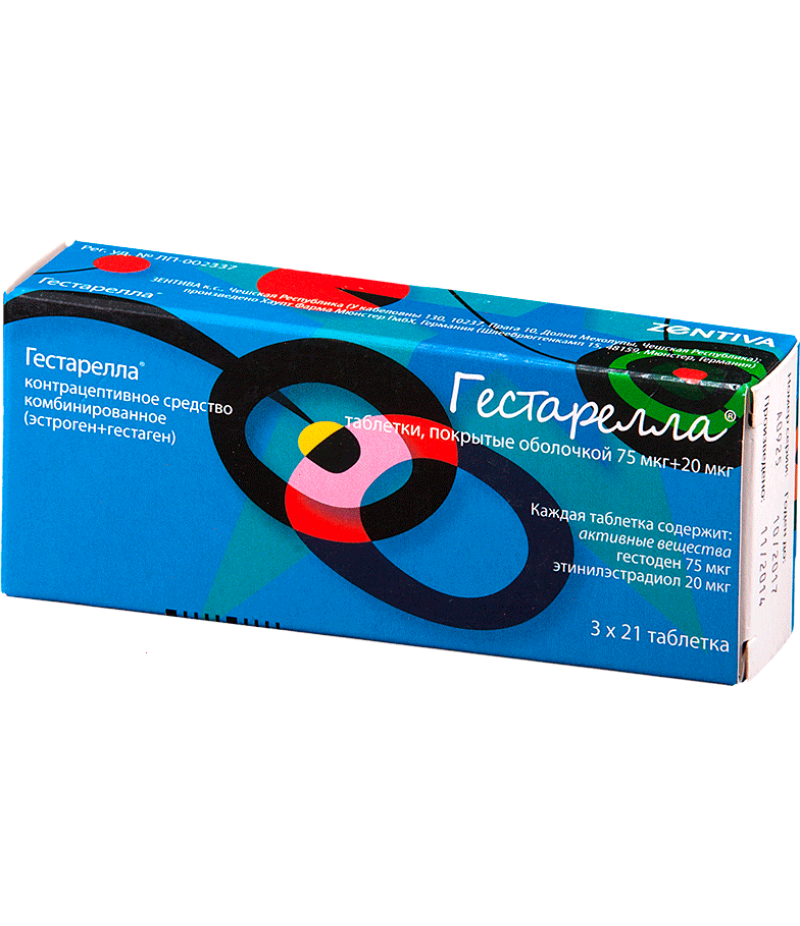Triquilar pills #21
- $30.41
- 3 or more $28.86
- Availability:In Stock
Triquilar user manualYou can buy Triquilar pills onlineComposition1 tablet contains the active ingredients levonorgestrel / ethinyl estradiol in the following proportions: 40/75 μg; 30/50 μg and 30/12
Tags: tabs
Triquilar user manual
You can buy Triquilar pills online
Composition
1 tablet contains the active ingredients levonorgestrel / ethinyl estradiol in the following proportions: 40/75 μg; 30/50 μg and 30/125 μg, respectively.
Secondary ingredients: lactose monohydrate, calcium carbonate, red and yellow iron oxide pigment, glycerol 85%, corn starch, montanglylic wax, magnesium stearate, povidone 25,000 and 700,000, macrogol 6000, sucrose, titanium dioxide, talc.
Form of issue
The drug Triquilar is released in the form of tablets in three different proportions of active ingredients: 5 pieces - 40/75 μg; 6 pieces - 30/50 mcg; 10 pieces - 30/125 mcg. In total, one blister (numbered by arrows) includes 21 tablets. One package can contain 1 or 3 blisters.
pharmachologic effect
Triquilar is a combined three-phase low-dose oral estrogen-progestational contraceptive (contraceptive).
Contraceptive effectiveness of Triquilar depends on three mechanisms of its action, complementing each other:
oppression of ovulation at the level of regulation of the hypothalamic-pituitary system;
modification of the characteristics of the cervical secret, in order to form an impenetrability for spermatozoa;
transformation of the endometrium, to create conditions that prevent the implantation of a fertilized egg.
When combined oral (oral) contraceptives (COCs) are used by women, a more regular menstrual cycle is observed, a decrease in the number of painful menstruation, a decrease in the intensity of bleeding and, as a consequence, a lower risk of iron deficiency anemia.
Levonorgestrel
When taken orally, levonorgestrel is absorbed for a relatively short time and almost completely. Serum Cmax is observed after about 60 minutes and is 2.3 ng / ml. One-time internal reception of 0.125 mg of levonorgestrel (the highest concentration of the substance in tablets) together with 0.33 mg of ethinyl estradiol leads to the determination, after about an hour, of its highest serum level at 4.3 ng / ml. Bioavailability of levonorgestrel, when taken orally, is almost 100%.
Levonorgestrel forms a bond with plasma albumin and globulin, which connects sex hormones (SHBG). Only 1.4% of the total plasma content is in free form, 55% are associated with SHBG and about 44% with albumin. Due to the induction of replication of the binding protein by ethinyl estradiol, a part of the substance associated with SHBG increases, and the other part, bound to albumin, decreases. After a one-time oral intake of the highest dose of levonorgestrel for Triquilar, its Vd is approximately equal to 128 liters.
Metabolism levonorgestrel is complete and passes all the typical metabolic pathways for steroids. After a one-time oral administration of the highest dose of levonorgestrel for Triquilar, the serum clearance is approximately 1.0 ml / min / kg.
Plasma saturation with levonorgestrel undergoes a two-phase reduction process. T1 / 2 in the terminal phase lasts approximately 22 hours. Levonorgestrel is excreted with bile and urine (1: 1) exclusively in metabolized forms, with T1 / 2 about 24 hours.
The pharmacokinetics of levonorgestrel depends on the serum level of SHBG, which doubles for the course of taking the drug (21 days). With daily administration of Triclvir, the plasma level of substances increases approximately twice, and the equilibrium concentration is observed in the second phase of the course. The clearance rate and volume of distribution, at equilibrium concentration, are accordingly reduced by 0.5 ml / min / kg and up to 52 liters.
Ethinylestradiol
The internal reception of ethinylestradiol leads to its rapid and complete absorption. Serum Cmax is observed after 80 minutes and is 116 ng / ml. In the process of absorption and initial passage through the liver, ethinylestradiol metabolism occurs, which determines its bioavailability at about 45%, with individual differences within the range of 20-65%.
In the mucosa of the small intestine and in the liver, ethinyl estradiol undergoes the process of presystemic conjugation. The main pathway of metabolism is aromatic hydroxylation. Plasma clearance is 2.3-7 ml / min / kg.
Ethinyl estradiol binds to albumin (nonspecifically) by 98%. Enters an inductor in the replication of the GSPN. Vd is equal to 2.8-8.6 l / kg.
The decrease in serum concentration of ethinyl estradiol undergoes two phases, the first of which proceeds with T1 / 2 about 60 minutes, and the second from 10 to 20 hours. From the body are excreted, with the help of the liver and kidneys (in a ratio of 6: 4), only metabolic products, with T1 / 2 approximately 24 hours.
After 7 days, an equilibrium concentration is observed.
Indications for use
The drug Triquilar is prescribed for the purpose of contraception (contraceptive).
Contraindications
disease states with the risk of thrombosis (including angina pectoris, ischemic transient attacks), observed today or in the past;
vascular thrombosis, as well as thromboembolism observed in a given hour or in the anamnesis (including cerebrovascular disorders, pulmonary embolism, myocardial infarction, deep vein thrombosis);
diabetes mellitus with complications of vascular etiology;
migraine, flowing with neurologic symptoms of a focal character (in the anamnesis);
Numerous or expressed risk factors for vascular thrombosis, including cardiac valve pathologies, heart rhythm disorders, coronary arteries and cerebral arteries, arterial hypertension (uncontrolled);
Pancreatitis, which occurs with a severe hypertriglyceridemia, observed today or in the past;
severe liver diseases and liver failure (until the stabilization of liver enzymes);
neoplasms of the liver (of any nature), observed today or in the past;
vaginal bleeding of unknown origin;
hypersensitivity;
diagnosed malignant hormone-dependent pathologies (including mammary glands and organs of the genital area), as well as suspicion of their presence;
proven pregnancy or possibility;
long-term immobilization, extensive injuries, serious surgical operations.
Carefully
metabolic disorders of a pronounced nature (hyperlipidemia, obesity);
idiopathic jaundice, otosclerosis with hearing damage or itching during a past pregnancy;
migraine;
congenital hyperbilirubinemia (illnesses of Gilbert, Rotor, Dubin-Johnson);
diabetes;
Crohn's disease;
uremic hemolytic syndrome;
sickle-cell anemia;
systemic lupus erythematosus;
arterial hypertension.
Side effects
various changes associated with the mammary glands (discharge, increase, tension, soreness);
uterine bleeding (breakthrough);
nausea;
spotting spotting from the vagina;
headache;
change in libido;
migraine;
mood disorders;
impaired vision;
deterioration of the use of contact lenses;
changes in vaginal secretion;
vomiting;
rash on the skin;
stomach ache;
erythema nodosum;
generalized itching;
erythema multiforme;
weight change;
fluid retention;
allergic manifestations;
cholestatic jaundice;
diarrhea;
increased fatigue.
Occasionally chloasma can be formed, especially in women, in whose anamnesis there is a mention of pregnant women's chloasma.
in isolated cases, the development of thromboembolism and thrombosis.
Triquilar, instructions for use (Method and dosage)
Packaging of the product includes instructions for the use of Triquilar and a round blister (with arrows) with 21 tablets, which are located along the course of the circle. Receipt of tablets must start from the sector with the index "Beginning", then, following the direction of the arrows, continue daily taking the nearest tablet. Tablets are taken orally (orally), preferably at the same time, with water. The duration of administration corresponds to the number of tablets - 21 days, followed by a 7-day break with withdrawal bleeding. Typically, bleeding occurs 2-3 days after taking the final blister tablet and may not stop before the first pill is taken from the next package, which begins to drink just after the 7-day interval.
Beginning of taking Triquilar tablets
At the previous month, if a woman did not take any hormonal contraceptives, Triquilar should be taken on the first day of menstrual bleeding (cycle). Acceptance of the initial tablet on the 2-5 day of the cycle, with parallel use, during the first 7 days, an additional barrier method of contraception (BC).
In the case of patients switching from other COCs, it is advisable to start using Triclvar on the next day after taking the final active tablet from the previous package, but not later than the next 24 hours after the 7-day interval (for COCs comprising 21 tablets) or after the final inactive tablet (for COCs including 28 tablets).
In case of switching to Triclvir from progestational drugs (mini-pili, implants, injectable forms) or intrauterine device (eg Mirena), the following recommendations should be observed:
the transition from mini-saws can be carried out without interruption on any day;
the transition from an intrauterine gestagenic agent or implant is indicated on the day of its removal;
transition from injection forms is possible at the time of the next recommended injection.
In all the above cases, for 7 days, it is necessary to use the BC.
After an abortion in the first trimester, you can start taking Triquilar without delay, in this case there is no need for additional contraception.
After abortion or childbirth in the II trimester, you should start taking pills on the 21-28th day. In the case of a later onset of taking the tablets, 7 days are used by the BC.
Recommendations for missing tablets
If you miss the nearest tablet for less than 12 hours, it is taken as soon as possible and then in the usual way.
If the nearest tablet (or several tablets) is passed for more than 12 hours, a reduction in contraceptive protection is possible. The risk of unwanted pregnancy increases with the number of missed tablets and the approximate time of the 7-day break, therefore, the following two basic principles should be followed:
In no case should Triquilar be interrupted for more than 7 days;
to achieve the correct oppression of the hypothalamic-pituitary-ovarian function, a continuous 7-day tablet intake is necessary.
In this regard, you can give the following directions when skipping.
Skip reception on the first week
It is necessary to take the final missed tablet as early as possible (even in the case of simultaneous intake of two tablets). The next pill is taken at one time. For 7 days, use the BC. It should be remembered about possible pregnancy during sexual intercourse for 7 days before missing tablets.
Skip reception in the second week
It is necessary to take the final missed tablet as early as possible (even in the case of simultaneous intake of two tablets). The next pill is taken at one time. Given the correct previous week of Triquilar, there is no need to use BC. In case of admission disorders during the first week or when more than one tablet is missed, it is necessary to use the BC for 7 days.
Skip reception in the third week
Because of the upcoming 7-day interval for taking tablets, the risk of a decrease in the reliability of the contraceptive effect increases. If skips are missed at this stage, one of the following two options should be strictly followed. Along with this, if the previous 7 days before the first tablet was skipped, the rest were taken accordingly instructions, you can not use the BC.
When you receive the final pill from the current blister, you should immediately take the first tablet from the next, bypassing the 7-day interval. In this case, bleeding cancellation is most likely to occur after taking the final pill from the second blister. Although in the process of taking the tablets there may be breakthrough bleeding or spotting.
You can stop taking the tablets from the current blister and make a 7-day break, from the day you skip the tablets. Then start taking the initial tablet from the new blister. In this case, in the absence of bleeding cancellation, you need to exclude a possible pregnancy.
Recommendations for diarrhea and / or vomiting
In the event of diarrhea and / or vomiting, within 4 hours after taking the pill, it is possible to reduce the contraceptive effectiveness, due to a violation of absorption of the drug. It is necessary to use the BC and be guided by the recommendations given in case of missing one tablet.
Restructuring of the menstrual cycle
To delay the start of the menstruation cycle, after the end of using the current blister, take the last 10 tablets (for 10 days) from the next blister. Consequently, the cycle can be extended for up to 10 days, until the end of the second blister (there may be breakthrough bleeding or spotting). The resumption of regular Triquilar administration takes place after a mandatory 7-day interval.
To transfer the day of the beginning of the cycle of menstruation for the desired day of the week, it is necessary to shorten the nearest interval in taking the tablets for the required number of days. In this case, the risk of non-occurrence of bleeding cancellation increases, respectively, shortening the interval. In this case, when using a second blister, breakthrough bleeding or spotting is possible.
Overdose
Symptoms of overdose are manifested by nausea, spotting bloody discharge, vomiting, metrorrhagia.
Symptomatic treatment is indicated.
Interaction
Pyrazolone derivatives, sulfonamides, can enhance the metabolic transformations of steroid hormones that make up Triquilar.
Long-term therapy with drugs (barbiturates, phenytoin, primidon, rifampicin, carbamazepine, griseofulvin, oxcarbazepine, felbamate, topiramate, ritonavir, hypericum drugs), inducing hepatic enzymes, which increases the clearance of hormones (genital), may cause a decrease in Triclvir's contraceptive effectiveness or breakthrough bleeding.
Parallel use of antibiotics from a number of tetracyclines and ampicillins can reduce the contraceptive protection of triclvir, due to a decrease in intrahepatic circulation of estrogens, which leads to a reduction in the content of ethinyl estradiol.
Triquilar can affect the metabolism of other drugs (eg, Cyclosporine), which can lead to a change in their plasma and tissue concentrations.
Storage conditions
Tablets are stored in the original packaging, at room temperature (up to 25 ° C).
Shelf life
The drug remains effective for 5 years.
special instructions
When using antibiotics of a number of tetracyclines and ampicillins, and also in the next 7 days, it is necessary to use BC.
The following are some of the risk factors and disease states, the presence of which, in the appointment of Triquilar, requires an individual approach in each case, taking into account the possible risk / benefit for the woman. These questions should be resolved before the COC is started and inform the woman about the likelihood of the manifestation or weighting of these conditions, as well as the possible need, in the event of complications, the elimination of tricvilar in the future.
The cardiovascular system
When taking Triquilar, there was a slight increase in the frequency of thromboembolism and vascular thrombosis.
Also, when taking COC, there are rare references to cases of thrombosis of other vessels of the circulatory system, such as: renal, mesenteric, hepatic, retina and its branches. In this case, communication with the use of COCs has not been proven.
If symptoms of cerebrovascular disorders or thrombosis are detected: unilateral swelling or pain in the leg; severe sudden chest pain; dizziness; sudden shortness of breath; strong unreasonable cough; any headache (strong, unusual, prolonged) of unknown origin; diplopia; spontaneous full or partial loss of vision; aphasia or incomprehensible speech; loss of consciousness; weakness; convulsive attack; sudden one-sided loss of sensitivity; lack of coordination; symptoms of an "acute abdomen", you should stop taking Triquilar and consult a doctor.
The risk of thromboembolism and thrombosis is increased when:
dyslipoproteinemia;
atrial fibrillation;
obesity;
migraine;
arterial hypertension;
pathologies of the valvular heart;
smoking (with age and increase in the number of cigarettes increases in the future, especially in women after 35 years);
the presence of thromboembolism in a family history, especially at a young age (in this case, after a thorough examination, it is necessary to decide the feasibility of using COCs);
with age;
severe surgical operations, prolonged immobilization, significant injuries, any operations on the lower limbs. In the case of a planned operation, it is best to stop taking Triquilar 4-6 weeks before it, with the resumption of taking the tablets 14 days after.
It is also necessary to remember about the increased risk of thromboembolism in the postpartum period.
Circulatory disorders can also occur with systemic lupus erythematosus, sickle cell anemia, diabetes mellitus, uremic hemolytic syndrome, chronic inflammatory bowel diseases (ulcerative colitis, Crohn's disease).
The increase in the severity and frequency of migraine attacks (may be the cause of cerebrovascular disorders in the future), against the background of COCs, can be interpreted as an excuse for stopping their admission.
Biochemical indicators, which may be signs of an acquired or hereditary predisposition to thrombosis, consist in hyperhomocysteinemia; resistance to protein C (activated); deficiency of antithrombin-III, protein S and C, antiphospholipid antibodies (lupus anticoagulant, antibodies to cardiolipin).
Neoplasms
In some studies, there are reports of an increased risk of cervical and breast cancers occurring with prolonged use of COC, albeit with an unproven causal relationship. This increase in the risk of malignant neoplasm formation is possible due to the early diagnosis of cancer related to cervical and breast examinations in women prior to the appointment of COCs. It is also worth noting that breast neoplasms in patients who ever used COCs were significantly less pronounced than those who did not take them.
In isolated cases, the occurrence of hepatic tumors was observed when taking COC. In case of manifestations of liver enlargement, severe pain in the abdomen, symptoms of intra-abdominal bleeding, the possibility of a liver tumor should be taken into account when establishing a differential diagnosis.
Other morbid conditions
Against the background of the use of Triquilar, if a woman has hypertriglyceridemia (including a family history), pancreatitis may occur.
Some insignificant increase in blood pressure was typical of many women using COC. In rare cases, a significant increase in blood pressure was noted, which required the abolition of the contraceptive and the transition to the treatment of hypertension. In case of positive reaction of the patient to therapy and stabilization of blood pressure, it is possible to resume the COC administration.
Below are the disease states that progress or develop both during pregnancy and when using COC, although with an unproven causal relationship: systemic lupus erythematosus, itching due to cholestasis, jaundice, cholelithiasis, porphyria, uremic hemolytic syndrome, chorea Sydenham; loss of hearing due to otosclerosis, Crohn's disease, herpes of pregnant women, ulcerative colitis.
Liver pathologies can cause cancellation of COC, before stabilization of liver function.
At the first time diagnosed cholestatic jaundice, against the background of previous COC or pregnancy, it is necessary to refuse the use of this contraceptive.
Although COCs affect glucose tolerance and insulin resistance, there is no need to adjust the regimen in patients with diabetes who use low-dose COCs (up to 0.05 mg ethinyl estradiol). Despite this, women with diabetes and taking COCs are required to undergo regular examinations of their condition.
Receiving Triquilar with a woman's inclination to chloasma, requires her to be careful while staying in the sun and other ultraviolet exposure.
Laboratory Tests
The use of COC can influence a number of results of individual laboratory tests, including the level of plasma transport proteins, adrenal parameters, hepatic and renal function, thyroid gland, carbohydrate metabolism, fibrinolysis parameters and coagulation. These changes, as a rule, do not go beyond the limits of normal indications.
Effects on the menstrual cycle
When taking COC, irregular bleeding may occur (breakthrough bleeding or spotting), especially during the initial months of taking the tablets.
In this regard, to conduct a reliable assessment of these bleedings can only be after the adaptation phase, usually consisting of three cycles.
In the case of developing or recurring irregular bleeding, after previous permanent cycles, a comprehensive examination is necessary to exclude pregnancy or malignant neoplasms.
Some women taking Triquilar bleeding cancellation during the 7-day interval in taking the pills does not develop. If this Triquilar was taken strictly according to instructions, without missing pills and other negative factors, then the onset of pregnancy is unlikely. However, before the next blister is taken, it is better to exclude a possible pregnancy.
Medical examinations
If the woman decided to use the COC, including Triquilar, she needs to undergo comprehensive gynecological and general medical examination (including cytology of cervical mucus and examination at the mammalogy), and also to exclude the pathology of blood coagulation and possible pregnancy.
If Triquilar is used for a long period of time, checkups should be performed every 6 months.
A woman should be warned that the use of COCs does not protect against sexually transmitted diseases, including HIV infection (AIDS).
Analogues
Jeanine;
Yaz;
Logest;
Midiana;
Novinet;
Yarina, etc.
In pregnancy and lactation
Tablets Triquilar not appointed during breastfeeding and pregnancy.
Reviews of Triquilar
Reviews of Triquilar, as in principle and other contraceptives of this group, a priori can not bear only a positive or negative assessment of their effectiveness and safety of admission. Combined oral contraceptives are selected and fully suitable only for a certain category of women, due to the characteristics of their body, the level of hormones, concomitant diseases, bad habits, etc.
Therefore, in the pharmaceutical market there are many analogs of the COC, one of which is exactly the right one for a woman. Based on the above, it is worth recalling that you can not independently prescribe a contraceptive drug, leave this decision to the discretion of a specialist and only after conducting a comprehensive survey.

